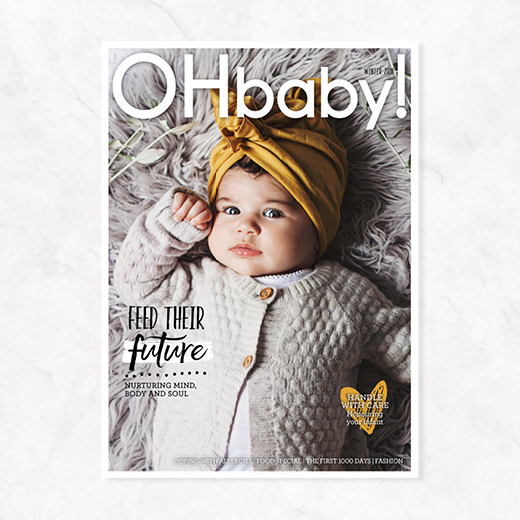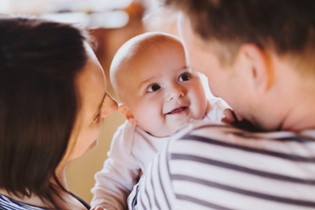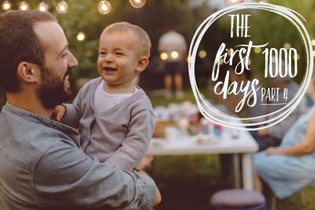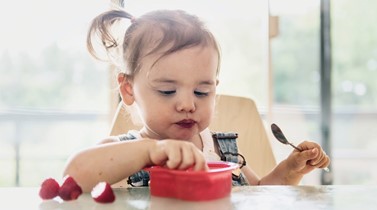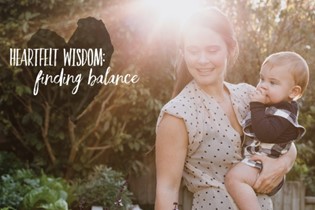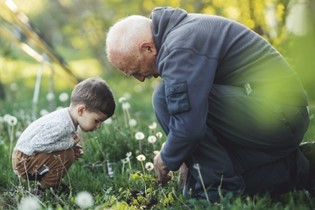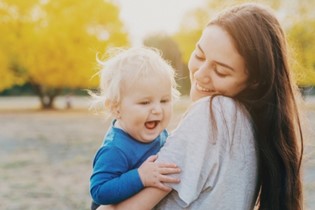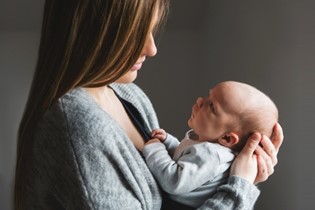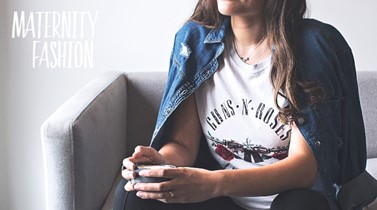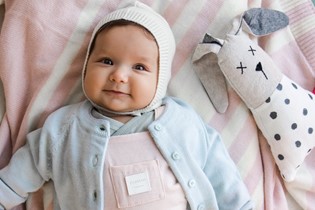How to nurture your child with respect
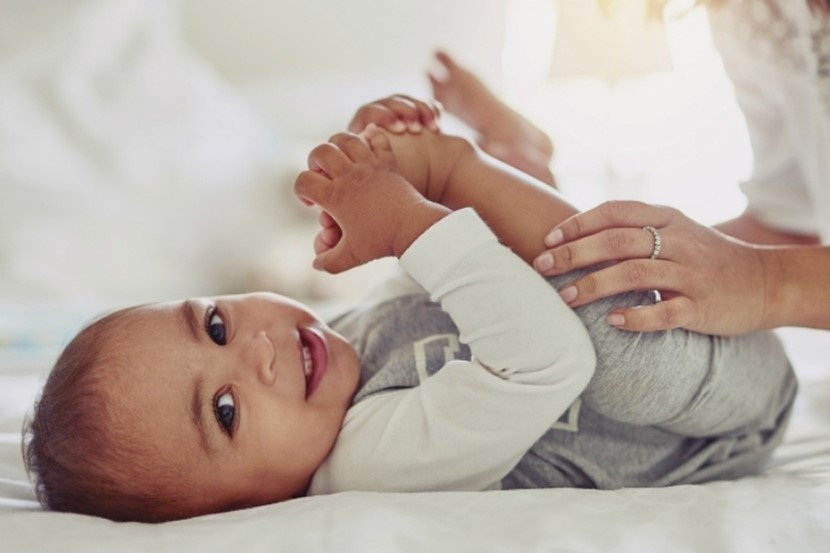
Miriam McCaleb finds out what respect means in the world of parenting, and how it helps raise competent, confident and curious children.
How do I love thee? Let me count the ways. Oh, how we love our babies. And just in case we’re not feeling it, nature has provided biological quirks to ensure we find them appealing. The young of all species – kittens, cubs and babies – have special features that unlock our inbuilt desire to nurture. Lessons from evolutionary biology confirm that human infants – with their oversized heads and adult-sized eyes – tap into our hard-wired role of protector and carer.
Cuteness! For our slow-growing human babies, it’s a lifesaver. Without an adult to fall in love with her, a little baby cannot forage, hunt or survive. Hence it is advantageous, essential even, that babies arrive here on earth so darned cute. And I see it, I really do! Those dimpled knuckles, the thigh rolls, the toothless grins. Their soft, soft skin and, oh, the scent of a baby! But here is the flip side of all that, my friends. While it’s healthy to embrace the feelings of nurture and protectiveness that we feel upon facing such cuteness, it can also be useful (and humbling!) to consider how we strive to be simultaneously nurturing and respectful.
There it is, friends: can you see where I’m going with this? The dark shadow that too often accompanies cuteness is … disrespect.Think about the fine line that separates celebrating an infant’s sweetness (which we must all continue to do!) and honouring his humanity. His agency. His selfhood. Babies are undeniably adorable, but they are people, not cuddly toys.
Pause and consider
I remember when I was a newly-minted early childhood teacher, working with infants and toddlers. A teacher in the older kids’ area was looking over the fence and saw the fine time we were all having in our sandpit. “Pass Lucy to me”, the teacher said, arms outstretched. “She’s so cute! I want to give her a cuddle.”
Bear in mind, dear reader, Lucy had not indicated that she wanted to leave the sand- pit. She had not noticed this other teacher. The small child was busily playing (which is to also say: working, experimenting and learning). This desire to hold her was a reaction by an adult, based entirely on adult wants, and not in response to child desire or need.
I hope I was respectful in tone when I turned down that teacher’s request. I hope I had the same respect for her humanity as I did for little Lucy’s when I gently questioned “Whose needs would that be serving?”. At least I hope I gently questioned. I fear that I was such a fierce baby advocate that I hadn’t yet learned to extend the same compassion and kindness to all adults. I’m getting there.
Look, I get it. Adults behave irrationally when overcome by waves of cuteness. But we must challenge our intentions: worst is when we are tempted to expand upon the cuteness, for example, dressing babies as animals or squashing them into photo-shoot flowerpots. Whose needs is that truly serving? I’ll wager it’s all to serve the adult desire for ‘cute’. A cute baby is a cute baby, and to photograph her in all her baby-ness is a celebration of both cuteness and humanness – no props required.
Most of us are not really used to thinking about babies in this way. It’s perfectly typical for groups of adults to play ‘pass the baby’ with a newborn. Again: whose needs does that serve? Certainly not the neurobiologically vulnerable infant. His important early work involves attaching to just a few significant adults. He is trying to work out the smells, sounds and differing touch of Mum, Dad, Nana and Uncle. Add in a big sister, an auntie and Poppa – that’s a full workload! To require that a new baby try to also make sense of the ladies from book club or all the folk at the office is, arguably, too big of an ask.

I turn here to the late, great Magda Gerber, whose book Your Self-Confident Baby is an infant respect classic. Famously, when someone asked if she wished to hold a baby, Magda replied by turning the question around: “Does the baby want to be held by me?”. In this subtle shift of language, Magda initiates a whole new way of viewing interactions.
Closer to home, we have another great teacher in this realm, and that’s Thames’ own Pennie Brownlee. Her book Dance With Me in the Heart is my go-to gift for new parents and it includes such wisdom as this: “If your baby could tell you what she would really like from you, she would tell you that she would like three wishes: to feel safe, to feel loved, and to be respected”.
Everyday opportunities
We can demonstrate a commitment to child respect in many ways during our day. First, let’s think about the way we manage care routines. Dressing, nappy changes, bathtime and feeding. These daily rituals offer not only the chance of fun, songs and communication, but they are also a great place to offer a respectful exchange.
Too often we fall into the trap of thinking that routines are something to tolerate, to rush through. These events have to happen each day, anyway, so we get to decide: will I hurry this nappy change, and what do I teach my child when I do so? Or, can I give this process just a little longer, let my tone stay light and my hands gentle, and what do I teach my child when I do so? And, importantly, how much of this care-giving routine can my child actually do for himself?
Sometimes it can be useful to imagine a care routine that does not involve a baby but instead is centred around an older person. Imagine your ailing parent, ageing grandparent or injured spouse. Heck, imagine your injured self! How would you want to see that person treated? Would you hope that the person supporting their dressing, bathing or toileting routine did so with an emphasis on efficiency (“Just hold still and let me get this done quickly!”, or would you prefer to see your loved one given an opportunity to participate in their care as fully as they are able – even if it took a little longer. That might sound a bit more like “I’ll hold your shirt steady, can you push your hand through?” or “I’ve got a warm cloth here. Would you like to give your face a wipe, or shall I?”.
These small choices can be useful. They give a person something to be in charge of. “I can take off my own socks, thank you!” And truly: I’ve seen amazing things happen with this spirit infusing a care routine. Four-month-old babies able to lift their legs when invited to, so a wet nappy can be slid out from under a bottom. A fifteen-month-old who is able to climb into his own carseat (on the occasions when there’s time to encourage it).
When we view infant care with the lens of “Could I handle it if a carer was treating my father that way?”, we open ourselves up to scrutiny (respectfully, of course). We realise, for example, that pulling a sweatshirt over someone’s head from behind, without warning … it’s kinda jarring. We must acknowledge that, when a person is busy in their world (be it playing with blocks or filling in a tax return!), they could use a verbal cue before they are interrupted, especially if that interruption is being unexpectedly picked up by someone bigger and stronger.
Set the tone
Perhaps it would be helpful at this point to include a reminder of why respect is so important early in a person’s life. We know that young children’s brains are doing massive amounts of work – synaptic pathways forming between brain cells with every new experience, and existing pathways strengthening each time an experience is repeated. Our interactions with our babies are important for creating neural pathways they’ll use throughout their lifespan. In childhood, trajectories are set and habits of mind are formed. Of course, change is always possible, but how much easier it is when children are given templates of respectful relationships right from day one.
And here is where I must also remind you, dear reader, that respectful care does not mean placing babies on pedestals, nor does it mean that we are merely bowing servants, offering limitless choices and tolerating daily dressing routines that take 45 minutes every single time. Oh, no.
Respect must flow both ways – and Mama, you deserve respect too. That means you have a right to do wees on your own! Your child has a right to complain about that, and to sit outside the bathroom door, but you have the right to a private pee. You have a right to put your purse in your bedroom and take off your shoes before you rush to get a drink for your toddler when you get home from the supermarket. You can do said tasks communicatively, with the promise of the drink to follow, but you are absolutely allowed to be your own advocate, too.
I have witnessed too many households where the power balance has swung completely the other way. Now, instead of tyrannical dads and unyielding mothering, observation reveals family dynamics revolving around doormat parents breeding unreasonable children. One example: mothers thanking children for eating the meals that those mothers have prepared. Speaking as the person in my house who does most of the meal prep, I simply must object. Talk about upside-down-town – this is the wrong way around!
Respect as a boomerang
It’s my view that an important part of a parent’s job is to support children in learning the skills that will make them nice to be around: a team player, a good flatmate! That means respecting others. For a parent, this looks like staying engaged during the minutiae of day-to-day life and paying attention to where that power balance lies. Mutual respect means that babies are heard and valued – and that adults are as well.
Respectful parenting is a deep philosophy made practical by the sometimes-messy mechanics of care routines and lives being lived. All the world’s major religions have a version of “Do unto others as you’d have them do unto you”, and this is an excellent touchstone for our parenting decisions too. For example, if I was biologically disregulated (for example: overtired or ‘hangry’!), I would hope that my family would cut me some slack until I’d had a cuppa and a snack. I usually have the wherewithal to own my own nonsense, and to be able to say “Give me a minute! I’m so hungry I can’t deal with this right now!”, and my family now trust me to come back to baseline once the protein hits my puku.
I do for them, they do for me, I do for them, repeat. This reality makes it easy for me to forgive less-than-awesome behaviour from my children from time to time, and to support them on the road to re-regulation.
There it is again: do unto others. I will strive to demonstrate my respect for the humanity of all in my family – young, old, and in between. And I expect that those young (and old and in between) in my family will demonstrate their respect for me and my humanity, right back.
|
Miriam McCaleb has been a kindergarten teacher and a university lecturer, and is a certified trainer for PITC. She parents, gardens and writes at home in North Canterbury. |
Recommended reading:
Dance with me in the Heart, by Pennie Brownlee. Also, check out Pennie’s blog: penniebrownlee.weebly.com.
Rethinking the Nappy, by Miriam McCaleb on behalf of the Brainwave Trust, available for download at brainwave.org.nz.

AS FEATURED IN ISSUE 42 OF OHbaby! MAGAZINE. CHECK OUT OTHER ARTICLES IN THIS ISSUE BELOW
